Fashion
Cassock Robes Explained: Styles, Colors & When to Wear Each Type
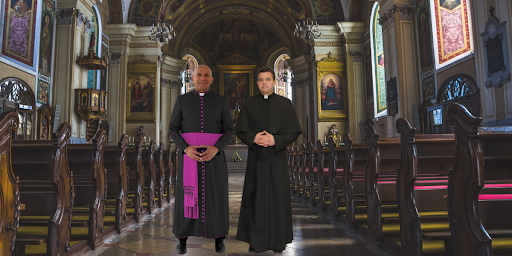
Have you ever stood in a church and been captivated by the long, flowing robes of a priest or altar server? Maybe you’ve caught yourself wondering what these garments are called, or what each color and style means. Why do some clergy wear red while others wear black or white? And what makes one cassock robe different from another? If you’re curious about these elegant yet deeply symbolic pieces of religious clothing, you’re not alone.
Understanding cassock robes can feel overwhelming at first, especially with so many traditions, styles, and rules tied to them. But don’t worry, this blog is your complete guide to cassock robes. Whether you’re stepping into ministry, choosing your first clerical garment, or simply intrigued by traditional men’s clergy apparel, you’ll find the answers here.
In this post, I’ll walk you through everything you need to know, from styles like Roman and Orthodox to the meaning behind each color, and when to wear which type. You’ll come away not just informed, but confident in how cassock robes help communicate reverence, tradition, and identity within the church. Let’s dive in and uncover the rich story these garments tell.
What Are Cassock Robes and Why Are They Worn?
Cassock robes are long, ankle-length garments traditionally worn by clergy within Christian denominations. You might also hear them called “clerical robes” or simply “cassocks.” These robes are more than just religious clothing, they are a symbol of service, humility, and spiritual calling.
In many traditions, the cassock is the foundation of liturgical attire. You’ll often see it worn under vestments during services or even as daily attire for clergy. The classic black cassock, with its button-down front and clean silhouette, is the most common. It conveys reverence and simplicity.
For centuries, cassocks have been central to traditional church clothing. They help distinguish roles within the clergy. From altar servers to bishops, the cassock serves as a visual cue to spiritual responsibility and dedication.
Styles of Cassock Robes: A Look Into Tradition and Identity
There are several styles of cassock robes. Each style reflects a different tradition or purpose. I’ll walk you through the most recognized ones.
Roman-Style Cassock
This is the most widely known. It’s sleek, black, and has a series of 33 buttons down the front, one for each year of Jesus’ life. The Roman-style cassock is often double-breasted, giving it a more tailored and elegant look. It’s worn by Catholic clergy, especially priests and seminarians.
Roman cassocks sometimes include colored piping or buttons that signify rank, red for cardinals, purple for bishops, and black for priests. The Roman-style cassock reflects a long-standing tradition in clergy attire and is one of the most iconic in men’s clergy apparel.
Anglican-Style Cassock
The Anglican cassock is usually single-breasted and more relaxed in its construction. It often includes a simple, straight cut and may be worn with a cincture (a belt-like sash). This cassock style is popular in Anglican and Episcopal churches.
Unlike Roman-style cassocks, the Anglican version can come in various colors, such as blue or grey, especially for choirs and lay ministers. It has a humble, functional feel while still remaining liturgical.
Orthodox Cassock (Riasa)
In Eastern Orthodox traditions, clergy wear a flowing, outer cassock called a Riasa. It’s worn over an inner cassock and is often more generous in size. The sleeves are wide and open, reflecting a more monastic style.
Orthodox cassocks symbolize devotion and spiritual separation from the world. You’ll often see these robes in deep black, symbolizing simplicity and renunciation. For Orthodox clergy, this traditional clothing expresses their commitment to a life of service.
Cassock Colors: More Than Just Black
While black is the most traditional color for cassock robes, other colors serve symbolic and practical purposes. Let’s explore what each color represents.
Black Cassocks
Black is the universal color for clergy. It represents humility, simplicity, and spiritual focus. Most priests and seminarians wear black cassocks as part of their daily clergy attire.
Red Cassocks
You’ll usually see red cassocks on altar servers, particularly in Catholic churches. Red symbolizes the blood of martyrs and is associated with sacrifice. During certain feast days and ceremonies, this color takes center stage.
Purple or Violet Cassocks
Purple cassocks are typically reserved for bishops. This color symbolizes penance and royalty. It’s most often worn during Lent and Advent.
White Cassocks
White cassocks are worn in warmer climates or on high holy days. They symbolize purity and resurrection. You’ll frequently see white cassocks in the Vatican or among clergy in tropical regions.
When to Wear Each Cassock Style and Color
Cassock robes aren’t just about tradition, they carry deep spiritual meaning and are tied to the rhythms of the liturgical calendar. Each color and style serves a purpose, helping clergy and lay ministers visually express the sacredness of specific roles and seasons. Here’s how to know when to wear each type of cassock and what message it communicates.
Daily Clergy Wear
For regular duties in the church, visiting parishioners, praying, or preparing for services, clergy usually wear black Roman-style cassocks. These robes are both practical and symbolic. Their button-down, double-breasted structure represents discipline, tradition, and readiness to serve. Black communicates humility and spiritual focus, making it ideal for daily ministry.
Liturgical Services
When it’s time to lead Mass or participate in special liturgical rites, cassocks take on more ceremonial roles. Often worn beneath vestments, cassocks help provide a clean and dignified base layer. Bishops may wear purple cassocks to indicate authority and penitence. The pairing of a cassock with stoles or chasubles creates a full visual expression of liturgical order and spiritual responsibility.
Choirs and Altar Servers
For altar servers and choir members, cassocks bring uniformity and purpose. Altar servers typically wear red cassocks, symbolizing sacrifice and the blood of the martyrs. These are usually paired with white surplices for balance and purity. Choir members may wear black or blue cassocks, depending on the tradition, to visually differentiate their supportive role in worship.
Special Occasions
Certain holy days call for specific attire. On joyous occasions like Christmas and Easter, white cassocks are worn to celebrate Christ’s resurrection and purity. These robes radiate joy, light, and renewal. In tropical or warmer regions, white cassocks are also worn daily for comfort while maintaining reverence.
Wearing the appropriate cassock shows respect for tradition and enhances the worship experience for everyone present.
How to Choose the Right Cassock Robe for You
If you’re part of the clergy or preparing to enter ministry, choosing the right cassock robe is important. Consider your tradition, role, and setting.
Think about the fabric, lightweight for warm climates and heavier wool for colder regions. Consider details like button placement, sleeve length, and fit. A well-fitted cassock not only looks dignified but also helps you move comfortably throughout the day.
I always recommend consulting with senior clergy or your denomination’s guidelines. They can help you select the proper vestments for your role and church tradition.
Conclusion:
Cassock robes aren’t just garments; they’re a sacred symbol rooted deeply in Christian tradition. Every stitch, button, and seam reflects centuries of faith, discipline, and spiritual devotion. Each style of cassock, Roman, Anglican, or Orthodox, tells a story of identity and tradition. From the 33 buttons on the Roman-style robe to the flowing sleeves of the Orthodox Riasa, every detail holds meaning.
Colors matter too. Black speaks of humility and daily service. Red highlights sacrifice and the blood of martyrs. Purple signals authority and repentance. White celebrates purity and resurrection. Knowing when to wear each color connects you with the rhythm of the liturgical calendar. Choosing the right cassock isn’t just about fashion, it’s about honoring your role in ministry. A well-chosen cassock shows respect for tradition and enhances your spiritual presence.
Whether you’re a seasoned priest, new deacon, devoted altar server, or simply curious about men’s clergy apparel, cassock robes offer a powerful connection to the church’s living legacy. Ready to find the cassock robe that fits your faith and function? Explore traditional, tailored, and modern options at eClergys.com. Discover your sacred style today.
Beauty
Electrolysis Hair Removal Explained: 10 Key Insights

If you’ve ever wondered whether there’s a truly permanent way to remove unwanted hair, electrolysis is one of the rare options that delivers. It’s a method that treats the hair at its root and offers long-term results that many other techniques cannot match.
Electrolysis hair removal is a permanent method that uses a fine probe and a small electric current to destroy hair growth cells within each follicle.
It works on all hair colors and skin types, unlike laser treatments that rely on pigment. Once a follicle is treated, the hair cannot regrow. It’s a safe, precise, and FDA-approved solution for lasting hair removal.
In this article, I’ll walk you through how electrolysis actually works, where it can be used, what to expect before and after a session, how many treatments you might need, and how it compares with other hair removal methods.
Electrolysis Hair Removal Explained: 10 Key Insights
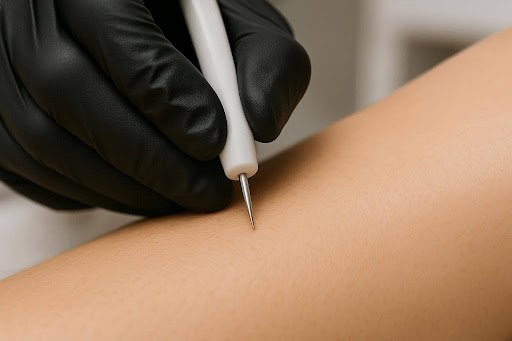
Electrolysis hair removal is based on the simple principle of destroying the hair growth cells within each follicle so that they can no longer produce hair. It’s a meticulous, targeted treatment performed one hair at a time, offering precision and long-term results.
Here’s how the process works:
- A trained electrologist uses a fine, sterile probe that’s about the width of a hair strand. This probe is gently inserted into the natural opening of the hair follicle, not the skin, so it’s virtually painless when done correctly.
- A small electrical current is then delivered through the probe to the base of the follicle, where the growth cells are located.
- This current destroys or weakens the follicle’s ability to grow new hair. The treated hair is then carefully removed with sterilised tweezers.
There are three main electrolysis methods used in clinics:
- Galvanic (Direct Current): Uses a low-level electric current that causes a chemical reaction inside the follicle. It produces sodium hydroxide, which gradually destroys the hair growth cells. This method is slower but extremely thorough, ideal for coarse or stubborn hair.
- Thermolysis (High-Frequency Current): Uses short bursts of radio frequency to generate heat, which cauterises the follicle tissue in just a fraction of a second. It’s faster and often used for smaller areas like the upper lip or chin.
- Blend Method: Combines both galvanic and thermolysis techniques, delivering the chemical and heat effects simultaneously. This method is highly effective for a wide range of hair types and skin tones.
The choice of technique depends on your skin type, pain tolerance, and hair texture. A skilled practitioner will select the most suitable method for each client and even switch techniques across areas for optimal results.
Areas Electrolysis Can Treat
Electrolysis is incredibly versatile. Because it doesn’t rely on pigment (unlike laser), it can safely treat any hair colour from white and blonde to dark brown or black and all skin tones, including very fair or deeply pigmented skin.
Common treatment areas include:
- Face: Upper lip, chin, jawline, sideburns, cheeks, eyebrows
- Body: Underarms, arms, legs, chest, back, abdomen
- Intimate areas: Bikini line and Brazilian zones
- Other delicate areas: Fingers, toes, and around the nipples
This flexibility makes electrolysis a great option for people who may not have been good candidates for laser hair removal, such as those with light or grey hair, hormonal hair growth (like PCOS-related), or mixed hair types.
Benefits of Electrolysis Hair Removal
Many people turn to electrolysis after trying other methods like waxing, threading, or laser, and finding that regrowth or incomplete results persist. Here’s why electrolysis stands out:
- Permanent results: Electrolysis destroys the growth cells in the follicle, meaning that once treated, the hair doesn’t return.
- Clinically proven and FDA-approved: Electrolysis is the only FDA-approved method for permanent hair removal, a distinction that even laser treatments do not have.
- Works on all hair and skin types: Because it doesn’t depend on pigment, it’s effective on light, dark, coarse, or fine hairs, including blond, white, and red hair.
- Safe and precise: Modern electrolysis equipment and sterile probes make the treatment safe for almost all skin types, including sensitive areas.
- Excellent for smaller or resistant areas: It’s often used to “finish” areas where laser treatment has left behind lighter or finer hairs.
When performed by an experienced professional, electrolysis offers clean, lasting, and predictable results.
What to Expect During a Session
Here’s roughly what a client might go through:
Preparation:
- The area should be clean and free of makeup, lotions, or creams.
- Avoid waxing, plucking, or threading weeks ahead of treatment, so the follicle remains present.
During treatment:
- The technician inserts the fine probe into one follicle at a time.
- You might feel mild sensations, a heated or stinging feeling as the current is applied.
- The intensity is adjusted to your comfort and your skin’s tolerance.
Session length & frequency:
- Small areas (e.g. upper lip) may take 15-30 minutes.
- Larger zones (legs, back) could take much longer, or even be split across sessions.
- Treatments are spaced out over time so the skin recovers (often weekly or biweekly at first).
Side Effects and Safety
Because electrolysis works at the microscopic level, side effects are usually mild and temporary. Possible reactions include:
- Redness or slight swelling
- Light scabbing or crusting
- Sensitivity or tenderness
To minimize risks:
- Apply gentle aftercare (described below)
- Avoid picking scabs
- Use sun protection
- Follow the technician’s instructions
Electrolysis is generally safe for all skin types when performed by experienced professionals. For particularly sensitive skin or skin conditions, a consultation is always prudent.
How Many Sessions Are Needed?
There’s no one-size-fits-all answer. The number of sessions depends on:
- The size of the treatment area
- Hair density (how many hairs per follicle)
- The hair growth cycle and how many hairs are active
- The type of hair (thicker hair may need more work)
On average, many clients begin to see noticeable hair reduction after 10-20 sessions (especially for facial zones). For larger areas or dense hair, it might take 20-30 or more.
Each session chips away at remaining active follicles until very few remain.
Electrolysis vs. Other Hair Removal Methods
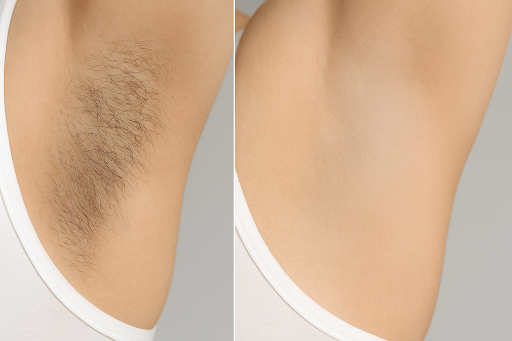
Here are the main distinctions:
Electrolysis vs Laser:
- Laser uses light energy to target pigment; it’s great for dark hair on light skin but less effective on light or fine hair.
- Electrolysis works on all hair colors and textures.
- Only electrolysis is recognised (by the FDA in the U.S.) as a permanent hair removal method.
Why choose electrolysis over others:
- If your hair is light, grey, or fine
- If the laser hasn’t worked well for you
- If you want a truly permanent solution and are willing to invest time
Waxing, threading, and shaving are all temporary. They don’t destroy the root and hair will regrow repeatedly.
Aftercare and Recovery
Proper aftercare helps your skin heal and reduces the risk of complications.
Immediately after treatment:
- Apply a cold compress or soothing gel
- Avoid sun exposure (use SPF)
- Don’t pick or scratch any scabs
- Use very gentle skincare (mild cleansers, avoid active ingredients)
Long-term care:
- Continue to protect your skin from UV
- Avoid harsh treatments or exfoliants in the treated area
- Maintain hydration and gentle skin products
- Return for follow-up sessions as advised
Conclusion
So, does electrolysis work? Yes. When performed by a qualified professional, it’s one of the few proven methods for permanent hair removal. Electrolysis effectively destroys the hair follicle at its root, preventing regrowth for good. It’s safe, versatile, and ideal for all skin tones and hair types, including light or fine hair that laser often misses.
If you’re considering electrolysis hair removal in London, choose a reputable clinic with experienced practitioners who can assess your needs and create a tailored treatment plan. With patience and consistent sessions, you’ll achieve smooth, long-lasting results you can feel confident about.
FAQs
Is electrolysis painful?
You may feel mild heat, tingling, or a slight stinging sensation when the current is applied. Most people say it’s tolerable. The technician can adjust the intensity to your comfort.
Is it safe for sensitive skin?
Yes, when performed correctly. For very sensitive or reactive skin, start with small test areas and notify your technician of any skin conditions. Proper aftercare is key.
How long does each session take?
It depends on the area size. Small areas (upper lip, chin) may take 15–30 minutes. Larger zones (legs, underarms) can take an hour or more. Your technician will estimate based on your hair and skin.
Can electrolysis be done on all body areas?
Yes, it’s suitable for nearly any part of your body, including face, bikini area, underarms, legs, arms, and back.
Fashion
Complete Outfit Guide for Philadelphia Eagles Fans
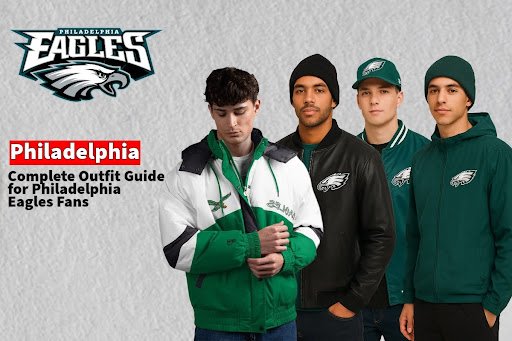
Hey, Eagles fans! You know being part of the Eagles Gang isn’t just limited to watching a match on a Sunday in the fall. It’s a year-round commitment and a lifestyle. We live and breathe in the colors of Midnight Green and Cali Green. It’s important to show this obsession to the world, and the best way to do that is with your clothing.
A jersey is a great thing, but a proper team gear instantly elevates your fan status. Whether you choose a classic Eagles leather jacket or a sporty Eagles varsity jacket, your outerwear makes a strong impression. Your clothes aren’t just for show. It should be comfortable and ready for all kinds of weather that Philadelphia can throw at you.
This guide is all about combining your passionate team spirit and your personal style. We’ll explore all the ways of style, comfort, shopping and care. So that you can confidently connect with your favorite team.
Why Jackets Matter for Eagles Fans
For the Eagles fan, the outerwear is more than just something to keep warm. It is a mark of honor. Wearing your team gear is an immediate connection to a larger community. It tells everyone where your loyalty is before you say a word.
This gear becomes part of your everyday life, not just your game day routine. Each outfit carries memories of big wins, tough losses, and selfless hope for the next season. It’s a piece of clothing that carries real emotional weight.
Popular Jacket Styles for Eagles Fans
Philadelphia fans express their love and pride for their team not only by chanting or watching the match but also in their everyday lives. Each fan chooses from a variety of styles according to their personality and needs. Here we will talk in detail about the four largest and most popular styles:
Varsity and Bomber Jackets
Varsity and Eagles bomber outerwear are the most popular among fans. The highlight of these outfits is their lightweight and comfortable design that is perfect for everyday life. These coats are inspired by university and streetwear fashion. Their colours are usually based on the team’s theme, i.e., green, white and black. They feature the team logo or team name in a prominent way that is instantly recognizable.
These outerwear pieces look great with jeans, joggers, and sneakers. Whether you’re going out with a friend or watching a match at the stadium, the bomber jacket is a versatile choice. In addition, it is best in spring and autumn due to its lightness.

Leather jackets
The Eagles leather jacket is a classic and bold choice. These outerwears are not only strong and durable. It becomes more beautiful with time. The leather coat has always been a symbol of style and strength, and it doubles a fan’s pride when the Philadelphia team logo is included on it.
These outerwear pieces are especially good in the winter. With them you can get a stunning and attractive look by wearing jeans and boots. Fans who want to portray their personality in a significant way always prefer leather jackets. In addition, these outfits are able to be used for a long time, so they are also a great investment.

Windbreakers and rain jackets
The weather in Philadelphia is often unpredictable. Windbreakers and rain outfits are most effective on rainy and windy days. They are lightweight as well as waterproof, so you don’t have to worry about getting wet when you go to watch a match.
Windbreaker jackets not only protect you from the rain but also from the air. The design is simple but practical. These outfits are perfect for sports enthusiasts and outdoor activities.

Satin and retro jackets
Satin and retro jackets are perfect for reviving nostalgia. The design of these outfits takes inspiration from the 80s and 90s, when Eagles fans used to support their team in these traditional ways. Satin outerwear is made of shiny and soft fabric, which gives a unique look.
Retro jackets are especially a favorite for fans who want to memorialize the team’s history and past accomplishments. It’s not just in fashion. It is also considered part of the collection. Many fans take care of these jackets. This will increase their value over time.

Seasonal Outfit Ideas with Eagles Jackets
Here are some ideas on how you can wear your team outerwear in different seasons.
Fall/Winter Layering
When the weather gets cold, it is important to apply layers for comfort and style.
- With the Eagles Leather Jacket: Wear it over a simple black or brown hoodie for extra warmth. Pair this combination with dark-colored jeans and sturdy leather boots. The sturdy style of leather outfit is perfect for cold, outdoor events.
- With the Eagles Bomber Jacket: The Bomber Jacket is ideal for wearing over a thick scarf with the team logo and a warm long-sleeved T-shirt. Complete this look with a hat and warm shoes.
Spring Looks
When the temperature rises, you can lighten your clothes.
- Light bomber or windbreaker: Pair a light nylon bomber outfit with chino pants or plain white sneakers. This combination is fresh, relaxing, and perfect for a city walk or spring afternoon barbecue.
- Satin jacket: A satin jacket looks great when buttoned down over a plain white t-shirt. Combine it with light wash jeans and your favorite trainers to get a sophisticated, supportive look.
Rainy Game Days
Be prepared for the rain without sacrificing style.
- Functional outerwear: A water-resistant windbreaker coat should be your top layer. Wear it over a jersey or hoodie so that all the rest of your layers stay dry. Shoes or rain boots with rubber soles are a must, especially for walking in parking lots.
Styling Tips for Different Occasions
Philadelphia team gear can be worn in several ways:
Match Day at the Stadium: During match day, the most important things are comfort and warmth. Wear a hoodie under a varsity or leather jacket. Add gloves and a hat in the cold. The stadium outfit should be such that you can enjoy the freedom.
Everyday life and the street: Jeans, joggers, and sneakers look great with the bomber coat; it’s a casual street style. If you want to look smarter, wear slim jeans and boots with leather outerwear.
The workplace’s cajole: If you want to represent the team in the office, choose a jacket with a small logo. Wear it with dark jeans or chino pants to create a smart casual style.
As a Gift: Team gears are also great gifts, especially satin or retro varsity styles. An Eagles leather jacket can be a memorable and meaningful gift for a fan.
Where to Find the Right Eagles Jacket
It’s important to wear the right outfit. The following sources are reliable:
Official Team Stores: Original and standard jackets are only available here.
Online Sportswear Retailers: A variety of styles are available at major web shops. If you want an Eagle jacket in leather, you can check out Team Leather Jackets.
Avoid counterfeit goods: Don’t trust suspicious vendors or very low prices. Look at the reviews and check the official tags before making a purchase.
Caring for Your Eagles Jacket
If you want your outerwear to look new and stylish even after every season, it is very important to take proper care of it.
Cleaning Tips: Always clean cloth jackets such as bombers or windbreakers according to the maintenance label. Most such jackets can be machine washed with cold water on a gentle cycle. It is best to air-dry them to prevent the fabric from shrinking or deforming.
Be especially careful with leather jackets. Don’t wash them in the machine. Clean the top with only a light damp cloth and use a leather conditioner from time to time to keep the jacket soft and protected from breakage.
Storage Tips: Always hang the jackets on a wide or padded hanger so that they don’t lose their shape. Don’t put them in the sun, because the sun’s rays will fade the color.
Maintaining a Vintage Design: If you have a jacket with an old or retro design, it will need more care. It is better to keep it in a garment bag and use it safely so that delicate fabrics such as satin are preserved.
Conclusion
Your journey as a Philadelphia Eagles fan is a story of dedication, passion, and pride. The jacket you’ve chosen plays a big part of that story. Whether you choose the sophisticated, high-end look of an Eagles leather jacket or the cool, relaxed vibe of an Eagles bomber jacket, your outerwear isn’t just a piece of clothing. It’s part of your identity.
We encourage you to choose a jacket that perfectly matches your unique style and your enduring passion for birds. Look for quality, make sure the fitting is right and wear it with pride, on match day and beyond.
Fashion
Color Trends in Polo Wear for the Modern Woman
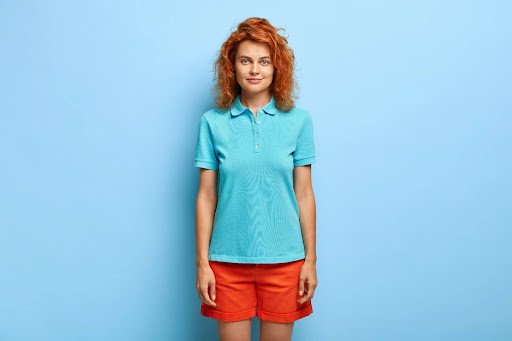
Polo shirts have become a staple in many women’s wardrobes. They combine comfort with a neat look that works well in many settings. Soft fabrics and a clean collar make polos feel both relaxed and smart. People wear them for work, casual meetups, and quick outings. Color plays a big role in how a polo looks and feels.
New shades keep this classic piece fresh and fun. Colors can lift a mood or make an outfit feel more grown-up. In this article, we explore the color trends shaping modern polo wear for women.
Polo shirts are still loved by women
Polo shirts keep their charm year after year. Their clean lines suit many body shapes and ages. A simple collar and soft knit make them easy to wear. Women like how a polo can look neat without feeling formal. It pairs well with jeans, skirts, or smart trousers.
A single polo can work for a day at the office or a relaxed weekend. Many brands offer various fits and subtle details, such as discreet logos or sleeve trims, that add a fresh touch. Color variety and light layers help women change their look fast. Small changes keep polos useful for many events and seasons.
How new color trends are changing polo wear
Color trends are reshaping how women pick their polo shirts. Designers and shops add new palettes each season, which helps classic pieces feel fresh. Pop culture, travel, and simple lifestyle shifts shape what colors become popular. Some months favor calm pastels and other months highlight bold, bright tones.
Many shoppers choose earth colors for a calm, natural look. Trend shifts let people try new shades while keeping the clean polo shape. Street style and social posts push some colors into the spotlight. Shoppers often pick a single colored piece to update an old outfit. This helps women update their look with a small color swap. Stores often show easy pairings so buyers can see new mixes. For instance:
- Pastels bring a soft, fresh feel to daily outfits.
- Bright shades add energy and a confident touch.
- Neutral tones keep outfits clean and easy to pair.
- Earth colors give a calm, grounded vibe to simple looks.
Pastel polo colors that feel soft and fresh
Pastel polo colors give a soft, fresh look that fits many days. Shades like light pink, mint, and lavender feel calm and gentle. These tones work well for spring outings, coffee dates, or easy office days. Pastels pair nicely with light denim, cream skirts, or pale trousers.
A pastel polo adds a subtle touch that keeps an outfit neat without much effort. Many brands offer pastel options in different fits, so it is simple to find a shade that matches skin tone and personal taste. They feel easy to wear and give a look in a small way. A soft color can make a basic polo look fresh.
Bright polo colors that help women get noticed
Bright polo colors bring energy to any outfit. Shades like red, yellow, and bright blue give an instant lift and a fun mood. These tones work great for outdoor days, meetups with friends, or casual weekend plans. A bold polo can act as the main piece and needs only simple bottoms like denim or neutral shorts.
Bright colors help a person feel more lively and sure of their look. Many brands offer bright options in soft fabrics, so these polos feel easy on the skin while making a strong style statement. A bright shirt pairs well with simple shoes and small accessories.
Neutral polo tones that always look classy
Neutral polo tones are a go-to for a neat, classic look. Shades like beige, grey, and white give a clean, calm feel that fits many places. These colors work well for office days, casual meetups, or trips when a low-key look is best. Neutral polos mix and match easily with bright skirts, dark jeans, or light trousers.
They help layers like blazers or jackets stand out without clashing. Many women keep a few neutral polos on hand because they are simple to style and last through many seasons. A white polo can look sharp with a blazer, and beige or grey pairs well with leather or soft knit pieces.
Polo colors inspired by nature and the earth
Simple, natural-inspired pieces can make everyday outfits feel fresh and easy to wear. Here, we break down some ideas to try:
Greens
Green polos recall plants and open spaces. Olive, sage, and moss shades work well for relaxed days and add a gentle yet rich look. Light green feels fresh with white or denim, while deeper greens match khaki or tan. These polos suit casual walks, weekend plans, or a smart casual office look when paired with neat trousers or a simple skirt.
Browns
Brown polos offer warmth and a down-to-earth feel. Soft tan or mocha shades feel cozy and pair well with cream or dark denim. Rich chocolate tones add depth and suit cooler days. Brown works well with leather belts or boots for a mixed-texture outfit. These colors feel neat and steady, a good option for relaxed work days or a calm weekend look.
Terracotta
Terracotta brings warm orange and clay tones that feel unique and natural. This shade works well with beige, cream, or dark denim to make a soft contrast. Terracotta polos are a nice pick for autumn days or creative events. The color lifts basic outfits and adds a warm edge without being too loud. Pair with neutral bottoms and simple accessories for a fresh look.
Seasonal polo colors that follow runway fashion
Runway shows often set the mood for seasonal polo colors. Spring tends to bring soft pastels and light tones that feel fresh for new days. Summer likes bright shades and lively mixes that work for warm weather and outdoor plans. Autumn moves toward earth tones like terracotta, warm browns, and muted greens that match the season.
Winter picks deeper shades such as navy, burgundy, and dark grey that feel strong and neat. Trends on the catwalk often reach local stores, and many women in the Netherlands look for poloshirts voor dames that fit both runway style and everyday wear.
Mix one trend color with a few classic pieces to keep a look modern and easy. Retail buyers pick safe shades first and then add bolder colors in small runs. Look for a favorite shade in a trusted fit to get the best value.
Easy ways to mix and match polo colors
Mixing polo colors is simple and fun. Small steps help you build neat outfits that look smart and match daily plans with ease and life. Let’s explore some easy ways:
- Start with a neutral bottom and add a colored polo to make the shirt the focus while keeping the base simple and neat.
- Pair pastel polos with light denim or cream skirts for a soft, calm look that feels fresh and easy for day use.
- Use a bright polo with plain shorts or jeans so the color stands out without clutter, keeping the rest of the outfit simple.
- Layer a neutral polo under a jacket to add depth, or wear earth tones with beige bottoms for a calm, put-together look.
Pick polo colors that fit your own style
Picking polo colors should match personal taste and daily life. Try a few shades to see which ones make you feel calm or lively. Some women prefer soft pastels while others choose bold hues to show energy. A good plan is to start with a few neutral polos and then add one or two color options you love.
Try shades in good light to see which ones get praise or feel right. Comfort and fit matter as much as color for regular wear. Keep a small set of favorite polos for quick choices and mix them with new shades now and then to keep your closet fresh.
In Short
Polo shirts stay a top pick for women because they are comfy, neat, and easy to style. Color trends keep polos fresh and let people show their mood and style without much effort. Pastels feel soft and calm, bright shades bring energy, neutral tones look classic, and earth colors offer a natural feel. Seasonal trends and runway picks give new ideas each year, and shops often copy those shades. Simple mix-and-match tips make it easy to wear different colors. Pick shades that make you feel good and enjoy polos that fit daily life.

 Blog9 months ago
Blog9 months agoHow to Deal with Scabies While Traveling

 Travel9 months ago
Travel9 months agoRichmond, Virginia Street Art Guide

 Travel9 months ago
Travel9 months agoPerhentian Islands: How to Get There, What to Expect, & More

 Travel9 months ago
Travel9 months agoHow to Live in Your Car in New Zealand

 Travel9 months ago
Travel9 months agoSouvenir in Nepal: A Guide to Unique Handicrafts and Cultural Treasures

 Travel9 months ago
Travel9 months agoVegan Guide to Dining Out in Richmond, Virginia

 Food9 months ago
Food9 months agoVegetarian Food Nepal: A Journey into Flavorful Plant-Based Cuisine

 Travel6 months ago
Travel6 months agoA Local’s Guide to Sanibel Island, Florida















